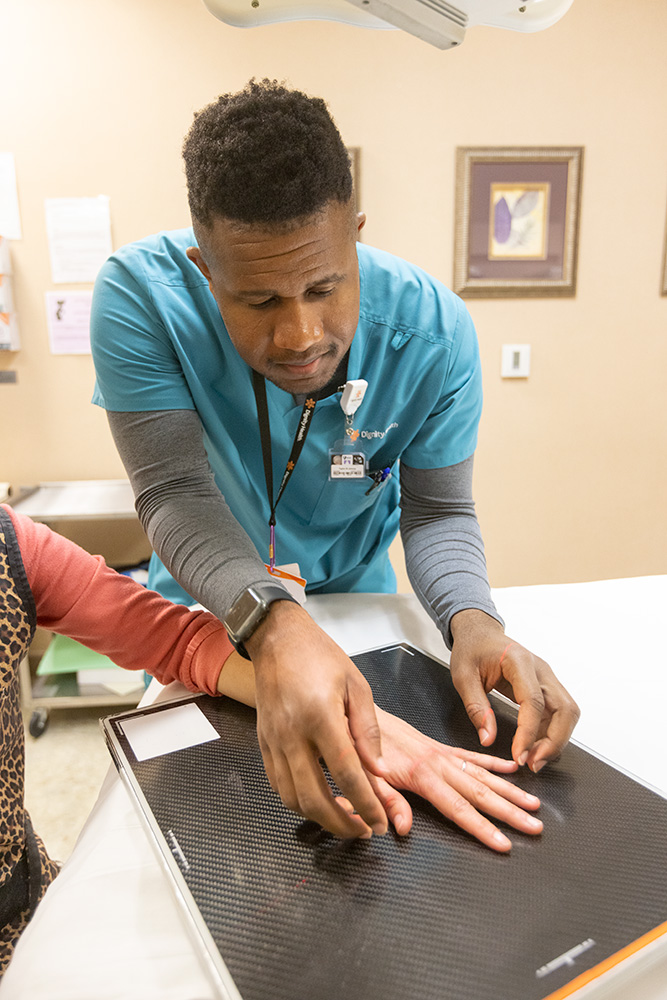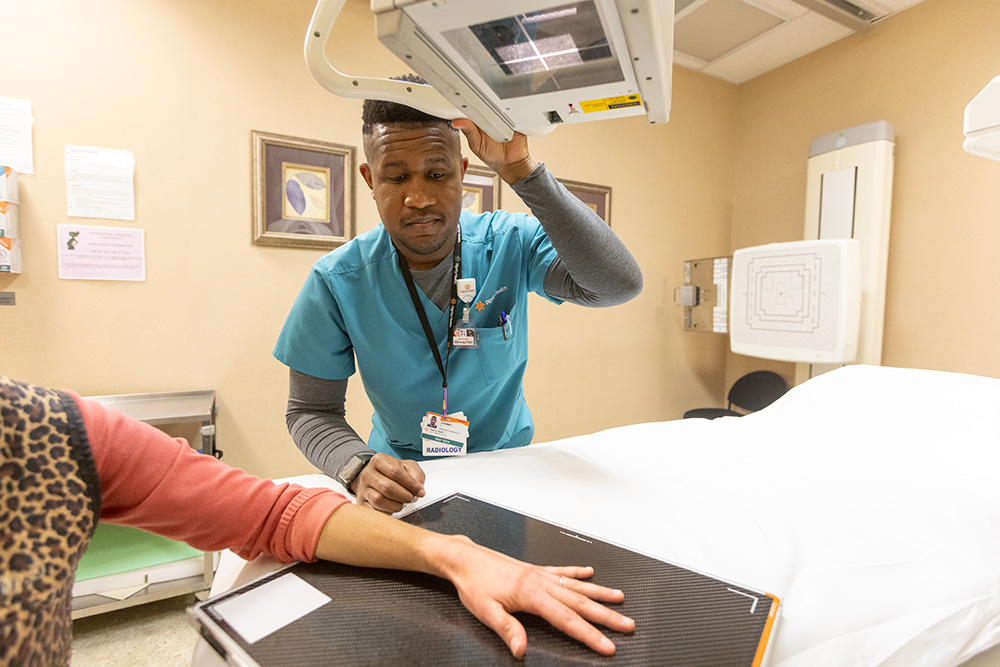Get Our Help
Experience top-tier subspecialty diagnostic and interventional radiology services in San Luis and neighboring communities. Elevate your healthcare with us.
805-542-9700


X-RAY (RADIOGRAPHY)
Radiography, known to most people as X-ray, is the oldest and most frequently used form of medical imaging. For nearly a century, diagnostic images have been created by passing small, controlled amounts of radiation through the human body, and capturing the resulting shadows and reflections on a photographic plate or film.
In addition to general X-rays, such as chest and bone exams, there are specialized procedures that use x-ray, including the following:
Barium Enema (BE) or Lower Gastrointestinal (GI)
You are probably familiar with X-ray images, which produce a still picture of your body’s internal organs. We use a similar imaging method, fluoroscopy. Fluoroscopy uses X-rays to capture a moving image of an organ while it is functioning. The technologist will insert a small tube into your rectum and fill the colon with barium. This exam enables the radiologist to visualize your colon using fluoroscopy, which is often the most effective way to view abnormal or blocked movement of waste through your body’s lower GI tract. We also use these exams for early detection of colon cancer.
Barium Swallow/Upper Gastrointestinal (GI)/Small Bowel
An upper GI series, or simply an upper GI, is an X-ray examination of the esophagus, stomach, and first part of the small intestine. However, in order for your anatomy to show up on radiographic images, your upper GI tract must be coated or filled with a contrast material called barium, an element that appears white on X-rays. Because you must drink barium for this exam, an upper GI is also called a barium swallow X-ray. Additionally, you may be asked to swallow baking-soda crystals to create gas and further improve the images; this procedure has the modified name of air-contrast upper GI.
Myelogram
A myelogram is an X-ray of your spine used to determine if there is any decrease or blockage in the flow of cerebral spinal fluid (CSF) within the spinal canal. We use this examination to diagnose a bulging disc, tumor, or changes in the bones surrounding the spinal cord. In most cases, an MRI is usually diagnostic, and because it is not invasive, it is the preferred test for obvious spinal disorders.
Intravenous Pyelogram (IVP)
An IVP is an X-ray examination of the kidneys, ureters, and urinary bladder using a contrast mat X-ray images. Contrast material is injected into your venous system and its progress through your urinary tract is then recorded on a series of quickly captured images. The exam enables the radiologist to review your anatomy and the function of your kidneys and urinary tract.
Voiding Cystourethrogram (VCUG)
A VCUG is an X-ray examination of the bladder and lower urinary tract. A catheter is inserted into your urethra, your bladder is filled with a water-soluble dye, and then the catheter is withdrawn. We will then capture several X-ray images of the bladder and urethra as you empty your bladder. These images allow the radiologist to diagnose any abnormalities in the flow of urine through the lower urinary tract.
X-Ray Preparation
We do not require any special preparation for most bone or chest X-rays. Once you arrive, you may be asked to change into a gown before your examination. You may also be asked to remove jewelry, eyeglasses, pins, and any other metal objects that might obscure the images. ALWAYS INFORM YOUR DOCTOR OR X-RAY TECHNOLOGIST IF THERE IS ANY POSSIBILITY THAT YOU ARE PREGNANT.
Upper GI/Small Bowel:
Have a light evening meal without dairy products the night before your exam, then take nothing by mouth (no smoking or chewing gum) after midnight. Usually, medications may be taken with a small amount of water. If you have any questions regarding medications, please contact our office.
Barium Enema (BE):
Pick up a preparation kit at our office at least two days prior to your exam.
Intravenous Pyelogram (IVP):
Pick up a preparation kit at our office at least two days prior to your exam. If you are breastfeeding, please call our office. Drink fluids up to 4 hours before the exam.
Myelogram:
Please call our office.
